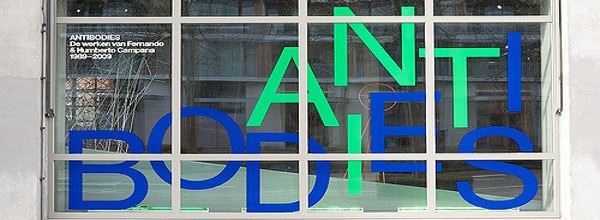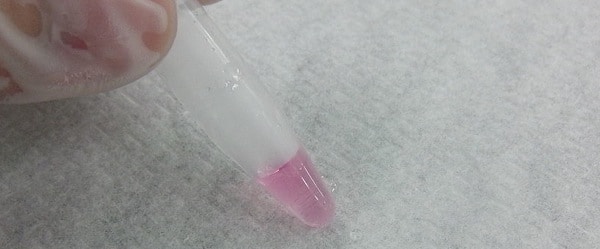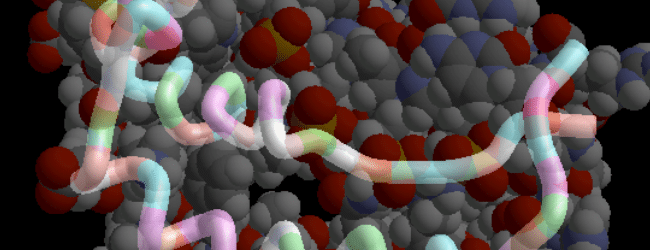You use your antibody frequently, maybe even every day. You rely on it for western blotting, immunohistochemistry, FACS, ELISA, and immunoprecipitation. You’d be lost without it. But how well do you really know your antibody? Are you sure that it detects what you believe it to detect? If you have the slightest doubt, or if you have never validated your antibody, you need to read this article.
Here I will tell you how to validate your antibody so that you can be confident in your experimental results.
Most companies demonstrate that their antibodies work via a western blot. Such antibody validation efforts typically show a band at the expected molecular weight, but nothing more. These western blots do NOT tell you the identity of the target, only the size. And this is a big problem.
There are many proteins of similar, if not identical, size in any given cell lysate. You will never be able to tell from a supplier’s western blot if your antibody recognizes a similarly sized non-target protein. And what about those extra bands that appear on your western blot? Are they unspecific and unrelated? Do they actually represent your intended target with post-translational modifications? Who knows? Not you.
You Will Never Know Unless You Validate
So without further ado, here are some tips for you to build your own antibody validation protocol:
Antibody Validation 1: Protein Depletion
The most straightforward, easiest, and unambiguous experiment you can do is to test a sample that you are sure does NOT contain your target protein. Whether you are working with yeast, bacteria, mouse, or cultured cells there are a number of ways to go about this:
- Ask around your department to see if anyone has a knock out (KO) mouse or cell line
- If you are working with yeast or bacteria, you can either generate your own deletion mutant or source one from the community
Theoretically, deleting a gene from the genome of an organism results in the complete loss of that protein. When you have secured your mutant sample, run a western blot (or IF or IHC) with the mutant side-by-side with the wild-type. If your antibody is truly specific you should not see a band in the mutant sample and a single band in the wild-type sample.
Sometimes, you won’t be able to take this approach, either because you can’t access a KO or because your target protein is an essential gene. In this case, you can try to knock down (KD) the expression of your protein by RNA interference (RNAi). Similarly to above, when you compare your wild-type and KD samples, you should see reduction or loss-of-signal in your KD sample. Bear in mind that siRNAs don’t always abolish their transcripts completely, so you may see a faint band in your KD sample. Another thing to remember is that you won’t always know how specific your siRNA is!
Antibody Validation 2: Antibody Competition
Interfering with protein expression might not always be enough. In some situations, it is virtually impossible to take this approach because certain proteins are expressed by many genes, e.g. histone H3 is expressed by 16 human genes!
In such cases, you first need to identify the amino acid sequence recognized by your antibody. This sequence is usually the antigen used to immunize the animal for antibody production, so check with the company you purchased your antibody from. Then, incubate your antibody with this peptide BEFORE you perform your western blot (or IF or IHC). The added epitope will compete with and – if your antibody is specific – neutralize your antibody. This can be seen as a loss of signal in a western blot. Bear in mind though that if the full-length protein was used as the antigen to immunize the animal, you will not be able to use this strategy.
Antibody Validation 3: Protein Overexpression
This alone might not be the greatest control experiment but it can be a good supplement to other approaches. Similarly to the protein depletion method, a specific antibody should yield a higher signal when you overexpress your target protein. You can either artificially overexpress your target using an expression vector or you can expose your cells to conditions that upregulate expression of your target e.g., upregulation during specific cell cycle phases. If your antibody is specific your signal should go up/down according to the expression level of your target protein.
My Antibody Is Modification-Specific, How Can I Validate Its Specificity?
Depending on your protein of interest you may be able to purchase antibodies against site-specific modifications, e.g. phosphorylation or glycosylation. Since modification-specific antibodies can be a unique indicator of protein function or activity, it is also imperative to validate these antibodies correctly.
You can validate modification-specific antibodies using the following guide:
- Firstly, you will need to synthesize peptides. Ask a chemist or a company to synthesize variations of a peptide of several (10-20 amino acids) lengths, encompassing the epitope recognized by your antibody. These peptides should include either the modified or unmodified epitope.
- Perform dot blots with these peptides. For this, spot serial dilutions of the peptides on nitrocellulose or PVDF membrane and proceed as for western blot.
- If your antibody is specific it should only recognize the modified version.
- Bear in mind that the composite of adjacent amino acids may also influence your antibody’s binding. For example, an acetylated lysine next to a phosphoserine might prevent a phospho-antibody from binding to its target. To be thorough you should also test different combinations of adjacent amino acids.
- Also, remember to synthesize peptides that contain similar sequence motifs. For instance, if your epitope is XXXXKpSTWXXXX (where X is any amino acid) and there is another region in the proteome with the same sequence, it is advisable to confirm that your antibody recognizes only the desired epitope.
By combining these dot blots with the peptide competition assays above you can be very confident in your antibody’s abilities.
Play With Cell Signaling!
Usually, protein modifications occur via enzymes in the cell e.g., phosphorylation is the result of a kinase. If you know this information, and if knocking down your protein is not efficient, you can use this information to validate your antibody. For example, knocking down the kinase that phosphorylates your protein should reduce the signal from your phospho-specific antibody.
Alternately, incubating your sample with lambda-phosphatase to remove the phosphorylation can confirm the specificity of your phospho-specific antibody.
Parting Words of Advice
The importance of performing antibody validation at the beginning of your project cannot be overstated. Not doing this can result in the loss of time and money. Unfortunately, there are no standards for antibody validation, and companies and researchers often do the minimum to ensure that an antibody does what it is supposed to do. Poor quality antibodies are a significant cause for paper retractions and literature pollution.
If you don’t want your research to fall victim, spend some time on antibody research, and validate your best friends before you trust them in your projects.
Originally published in 2015. Updated and republished in 2017.







